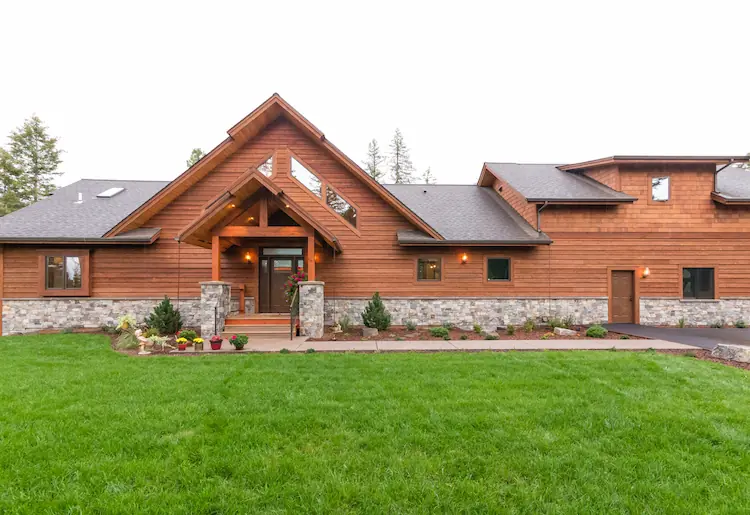Hiring the right siding contractor can be the difference between a home that quietly resists weather for decades and one that needs repairs every other season. If you’re weighing materials, timelines, and budgets, this quick guide walks you through what matters most—without the jargon.
Start with outcomes, not just prices
Before you collect bids, define what “success” looks like:
- Look & feel: modern panels, classic lap, or rustic textures?
- Performance: wind rating, moisture management, and energy targets.
- Maintenance appetite: fresh paint every 8–10 years, or a finish that can go 20?
A sharp pro will translate those goals into specific assemblies (WRB, flashings, ventilation) instead of just quoting “per square foot.”
Signals you’ve found a pro you can trust
- Detail-forward estimates: They list substrates, fasteners, clearances from grade, and where kick-out flashings go.
- Jobsite discipline: Dust control when cutting fiber cement, protected landscaping, and daily cleanup.
- Mockups: One small wall or corner built first so you can approve exposure, reveals, and color in natural light.
- References with age: Not just last month’s jobs—ask to see installs that are 5–10 years old.
Common bidding traps (and how to avoid them)
- “Includes flashing” (but which kind?): Ensure head flashings over every opening and kick-outs at roof-to-wall transitions are specified.
- Paint vs. factory finish: On-site painting can be great, but factory finishes carry longer color warranties—compare both honestly.
- No ventilation gap: In many climates, a rainscreen cavity (furring or mat) dramatically improves drying and paint life.
Cedar done right: warm, durable, and fixable
Cedar’s charm isn’t hype—it’s the grain, the warmth, and the way it patinas. It also offers practical perks:
- Workability: Cuts cleanly, excellent for custom trims and tricky corners.
- Repairability: One damaged board can be swapped without drama.
- Design range: From board-and-batten on modern farmhouses to shingles in coastal craftsman styles.
To help cedar age gracefully:
- Back-prime or use factory-finished boards so all faces are sealed.
- Keep it off the ground—6–8 inches above grade to avoid splash-back.
- Mind water management—ventilated cavity, properly lapped WRB, and crisp flashings.
- Maintain on a cadence—transparent stains need more frequent refreshes; semi-transparent or solid-color stains stretch the interval.
Picking between cedar and alternatives
If you love the handmade look and want easy spot repairs, cedar is tough to beat. If you prefer longer repaint cycles and higher fire resistance, fiber cement or engineered wood can be smarter. In urban or commercial contexts, metal or panelized systems deliver crisp lines and quick coverage—but demand precise layout.
Installation checklist you can bring to any bid
- Continuous WRB with taped seams and properly integrated window flashing.
- Ventilated rainscreen gap (even 3/8–3/4″) to drain and dry.
- Corrosion-resistant fasteners matched to the material and finish.
- Movement joints for long runs and panel fields.
- Documented clearances at roofs, decks, and hardscape.
Budgeting without surprises
Numbers swing by region and façade complexity, but plan for the “invisible” essentials—substrate repairs, scaffolding, trim packages, and finish coats. These often account for 20–40% of what you see on the wall. A transparent bid will spell them out.
The quiet advantage of planning
Great siding is a system, not just a pretty face. When your installer thinks in layers—structure, WRB, ventilation, cladding—you get fewer callbacks, tighter energy performance, and paint that actually lasts.
Ready to zero in?
If your heart is set on a timeless, natural look, explore cedar plank siding options with factory finishes and ask for a small mockup before you sign. The right craftsperson plus the right details will make your exterior look great on day one—and even better in year ten.
You may also like
-
Hiring An Architect To Design Your Home
-
Winter is Coming: A Kansas Building Manager’s Guide to Preventing Frozen Pipes with Commercial Plumbing Services in Kansas
-
How to Install an Artificial Hedge Easily
-
Get Exclusive Diwali Offers on Whirlpool Double Door Refrigerators
-
Who is Best Pipe and Joint System Supplier in Malaysia

